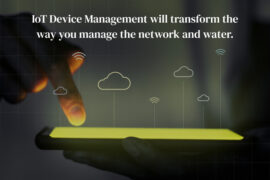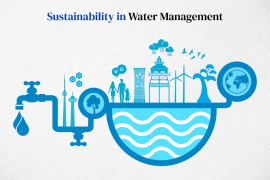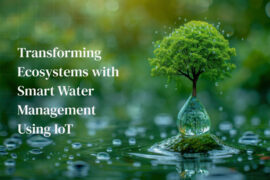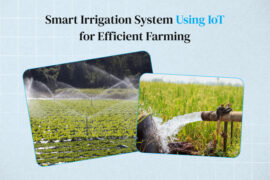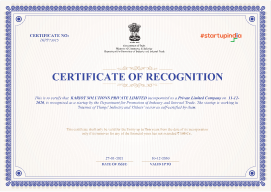Two revolutionary forces Artificial Intelligence (AI) and the Internet of Things (IoT), are merging to usher in a new era of intelligent technologies. In the swiftly evolving technological landscape. The combination of IoT, which connects commonplace devices to the internet and AI. Which possesses the capacity to learn and make decisions, is revolutionizing our quotidian existence and establishing the foundation for revolutionary advancements.
Central to the evolution of smart technology is this fusion. Which holds the potential to reshape our future by introducing more intelligent solutions, unparalleled efficiency, and connectivity. This article explores the incorporation of AI in IoT, emphasizing present developments, prospective ramifications, and practical uses. Its objective is to elucidate technology aficionados, industry experts, and policymakers regarding the paradigm-shifting capacity of this collaboration.
Present Environment of AI in IoT:

AI in IoT devices is no longer a futuristic concept; it is an established reality. Wearable health monitors and smart residences that adapt to our preferences are examples of how AI and IoT are enhancing the usability and intuitiveness of technology. This integration is utilized by smart cities to manage traffic and conserve energy, thereby substantially enhancing urban living. Prominent statistical data indicates a burgeoning dependence on AI in IoT devices, as evidenced by the exponential growth of their adoption.
Technological Innovations and Trends:
IoT technology is now an important part of making water control systems smarter and more efficient. IoT-based water management uses sensors and other devices to keep an eye on things like water quality, flow rate, pressure, and leaks in real time. Then, predictive analytics and advanced machine learning techniques, which are changing other industries, are used to look at this constant flow of data. The information gained allows for proactive management of water supplies, which means that problems can be seen coming before they become major ones.
Smart sensors detect pipeline leaks early, alerting repair teams quickly to prevent major water loss and infrastructure issues. Similarly, IoT devices allow farmers to use water more efficiently by controlling irrigation based on weather and soil moisture, reducing waste and boosting productivity.
Edge computing is also being used in smart water management systems, which is in line with general technological trends. These systems can make decisions in real time because they process data closer to where it’s being collected. For example, they can change valves to quickly control the flow of water based on current demand or environmental conditions. These changes not only make the system faster, but they also lower the bandwidth needed for data transfer, which makes it easier to expand and cheaper.
As IoT technologies keep getting better, there are more ways to be creative with water control. In the future, there may be smarter AI models that can predict patterns in water supply and demand. Filtration methods that are monitored by IoT devices, and more user involvement through apps that give information about how much water is used and how to save it.
Difficulties and Resolutions:

Although there are potential benefits to integrating AI in IoT. Doing so also entails various difficulties such as security vulnerabilities, privacy concerns, and intricacies in data administration. There are emergent solutions that govern and analyze data securely and efficiently, including the development of more sophisticated AI algorithms. Improved encryption methods, and stringent data privacy regulations.
Future Implications and Opportunities:
The predictive potential of AI in IoT is immense, as it may lead to the development of more personalized and anticipatory applications for commonplace devices. The current evolution presents substantial prospects for technological advancement and business ventures to foster innovation. Furthermore, it presents significant societal and industrial concerns. Given that the implementation of these technologies will have repercussions on labor markets, personal privacy, and ethical parameters.
Case studies and real-world applications comprise:

Success tales are abundant in the domain of AI in IoT. Encompassing predictive maintenance in manufacturing that effectively minimizes downtime and expenses. As well as smart grids that optimize energy distribution. The convergence of AI and IoT yields practical advantages and advances in efficiency. As demonstrated by these case studies, which highlight the innovation occurring in a variety of industries.

Conclusion:
The convergence of artificial intelligence (AI) and the Internet of Things (IoT) is a catalyst for the development of intelligent technologies. Providing a glimpse into a future in which our planet is more interconnected, intelligent, and productive. In light of the imminent technological revolution, it is imperative that all relevant parties. Including policymakers and developers, actively participate in and comprehend. The potential of artificial intelligence (AI) within the Internet of Things (IoT). Through wholeheartedly adopting these developments. We can gain access to an infinite array of opportunities. Thereby molding a more intelligent and environmentally conscious future for subsequent generations.


